BIMINI – PERSONEL PROTECTIVE EQUIPMENT
The bluewater dream is a dream of sun and warmth – and the less sun and warmth you have in your daily life, the more you dream of basking in them on your travels. That much makes perfect sense from my vantage point in Hamburg, but it surprises me how many sailors completely fail to anticipate the downside of trying to live and sail in the glare of the midday tropical sun. A perfunctory survey of the sun protection solutions on the market indicates that – not for the first time – compromise is the name of the game. Even those investing in new builds, for whom the cost of a bimini is presumably just one more drop in the ocean, have little in the way of attractive options. Why are bluewater sailors so poorly served in this respect? I put it down mainly – not for the first time – to a lack of good information.
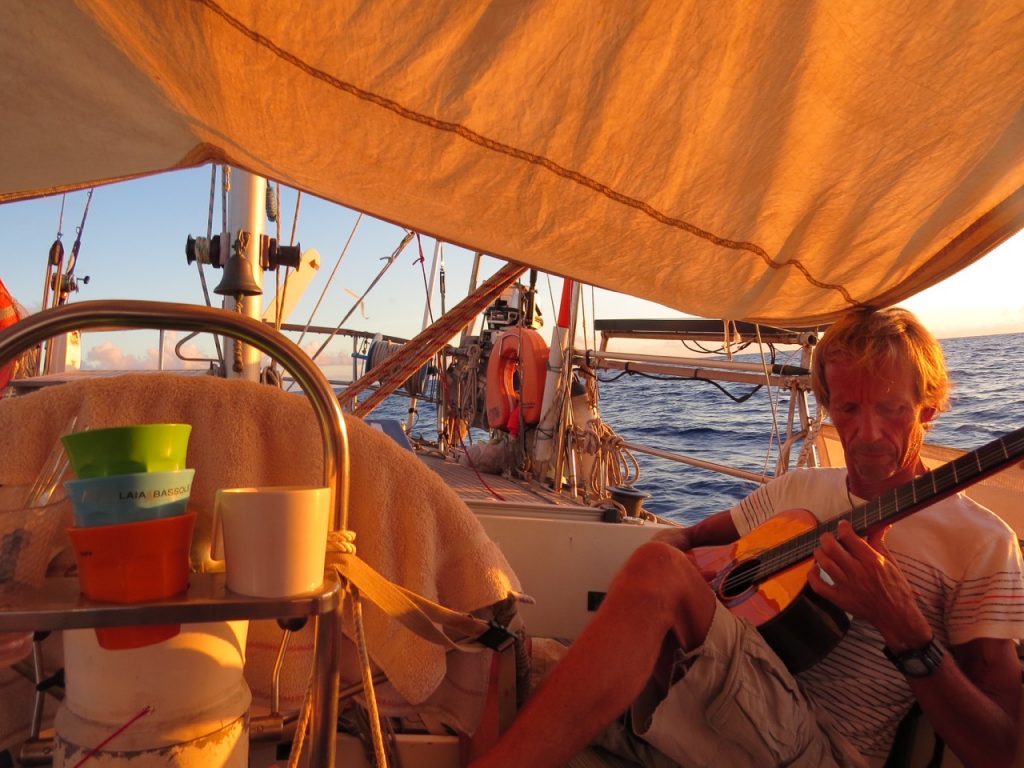
Almost all of the biminis marketed as standalone accessories are sold in kit form, packaged for different lengths or widths, and have to be adapted to fit the intended boat. Most of them come with some significant disadvantages above and beyond the aesthetic
– not very stable when deployed
– tubular support structures susceptible to wind damage (not strong enough)
– access to the cockpit obstructed by stays/guys that run to the rail/cockpit coaming
– usually unsuitable for use while sailing due to conflicts with mainsheet, boom or sails
– available designs seldom match the look of the boat to which they are attached.
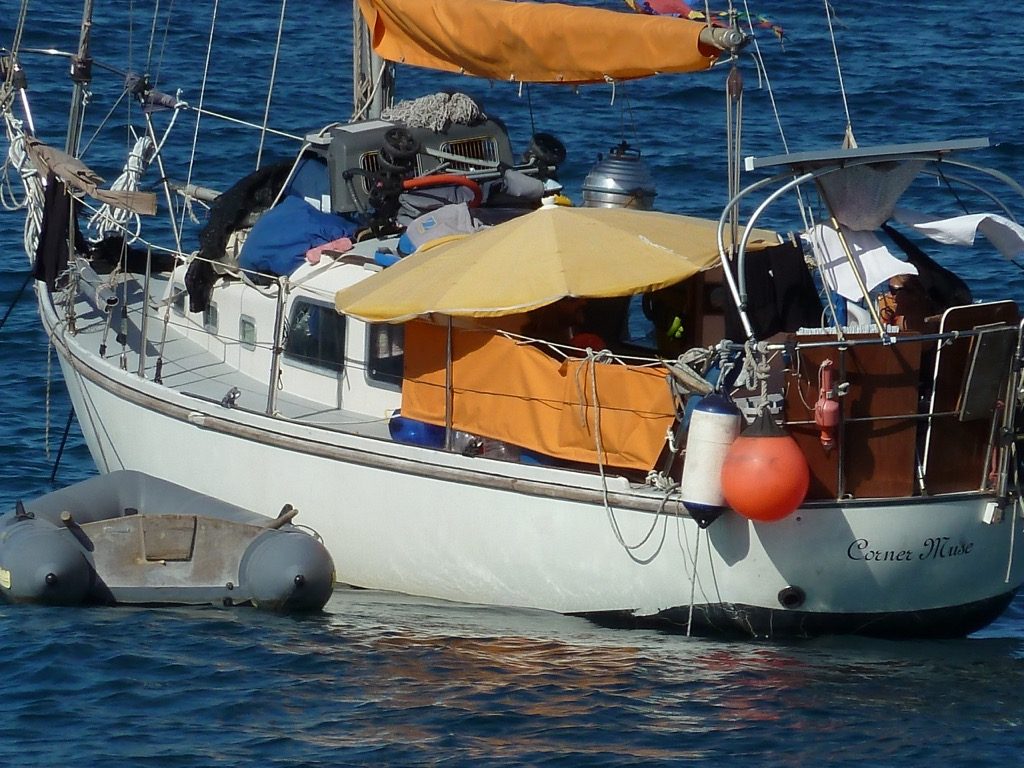
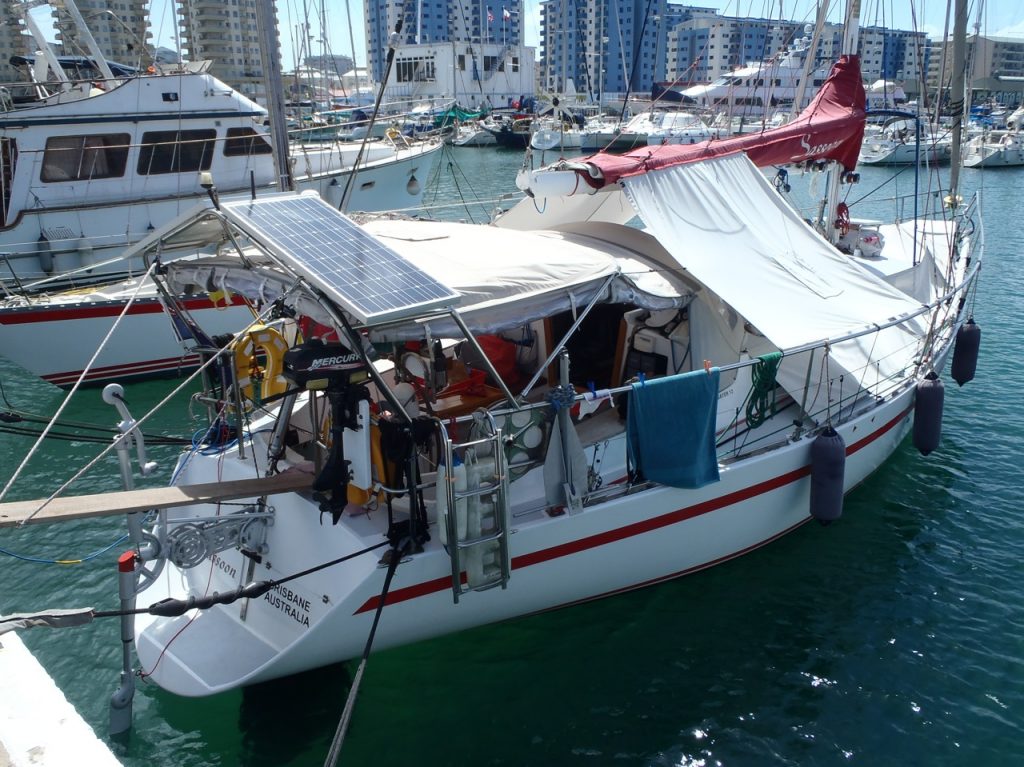
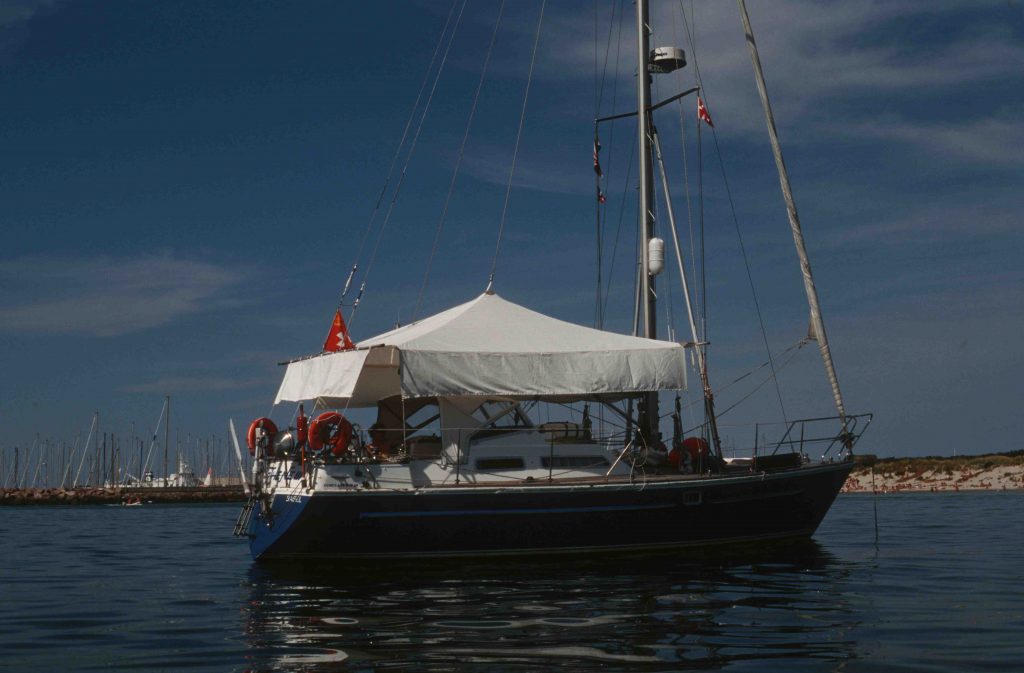
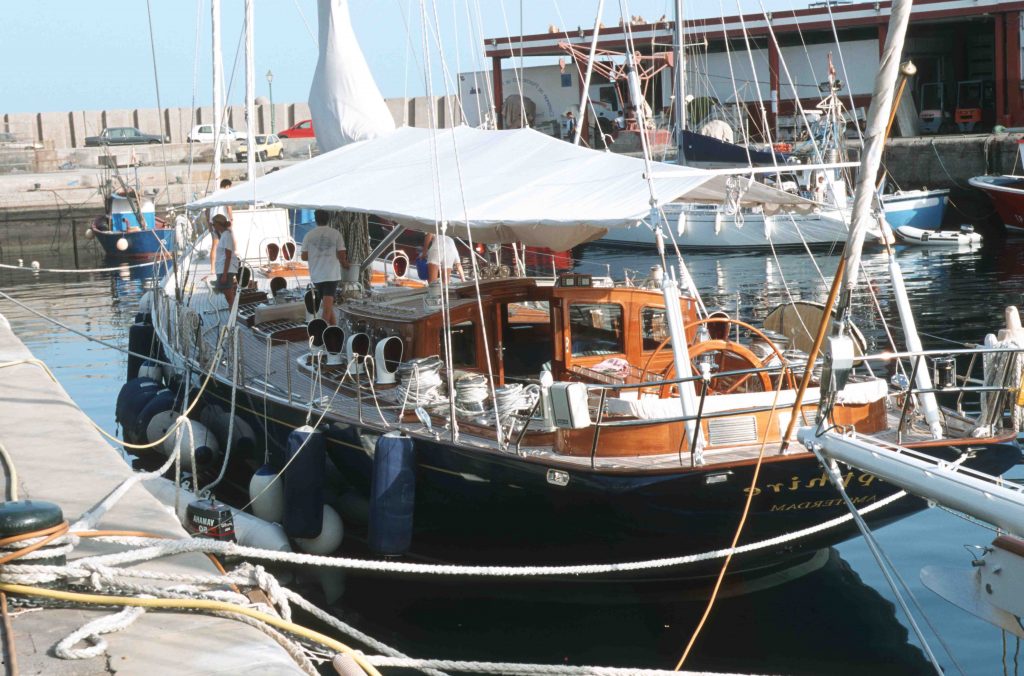
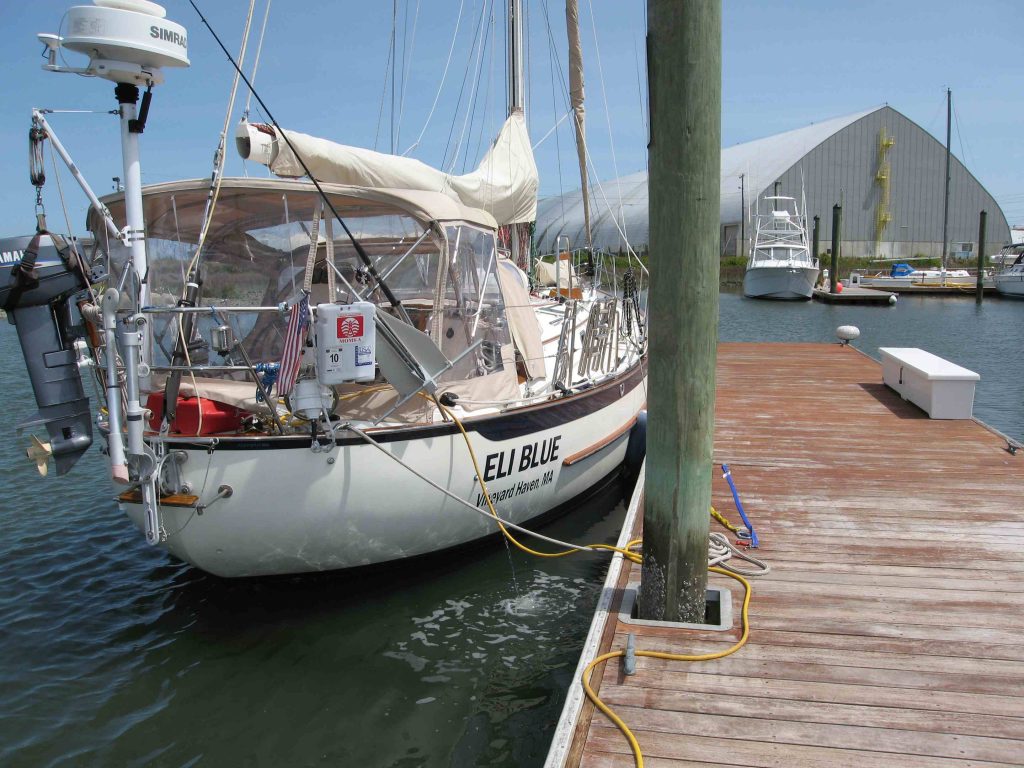
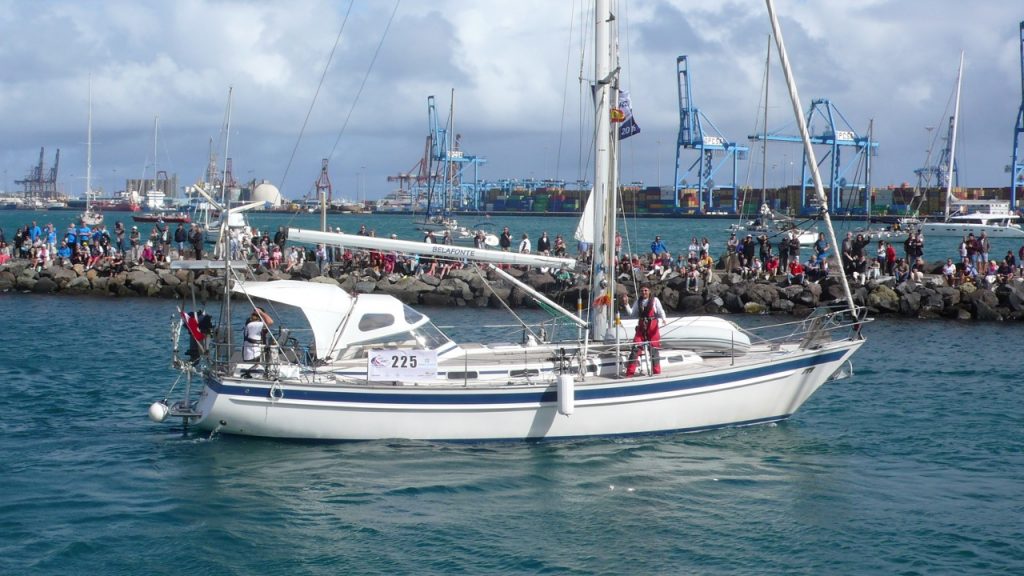
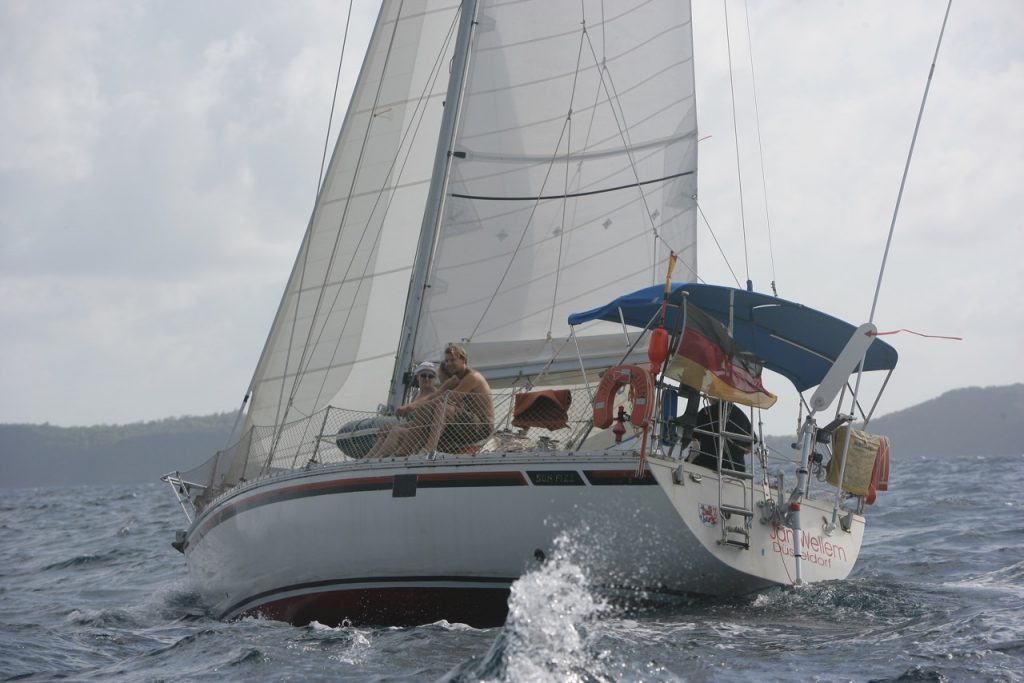
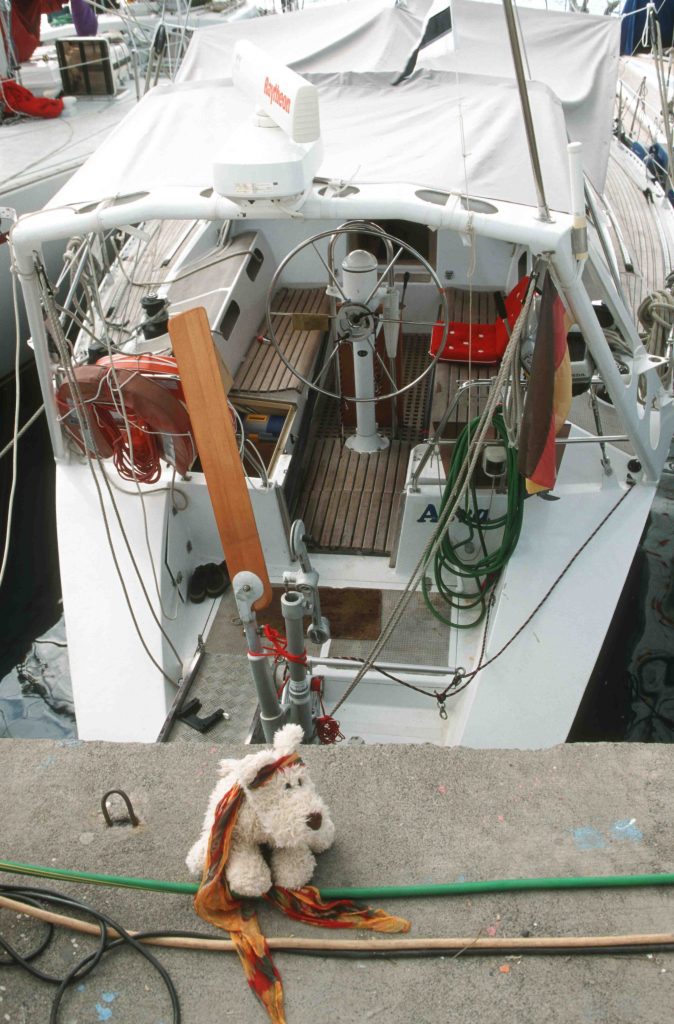
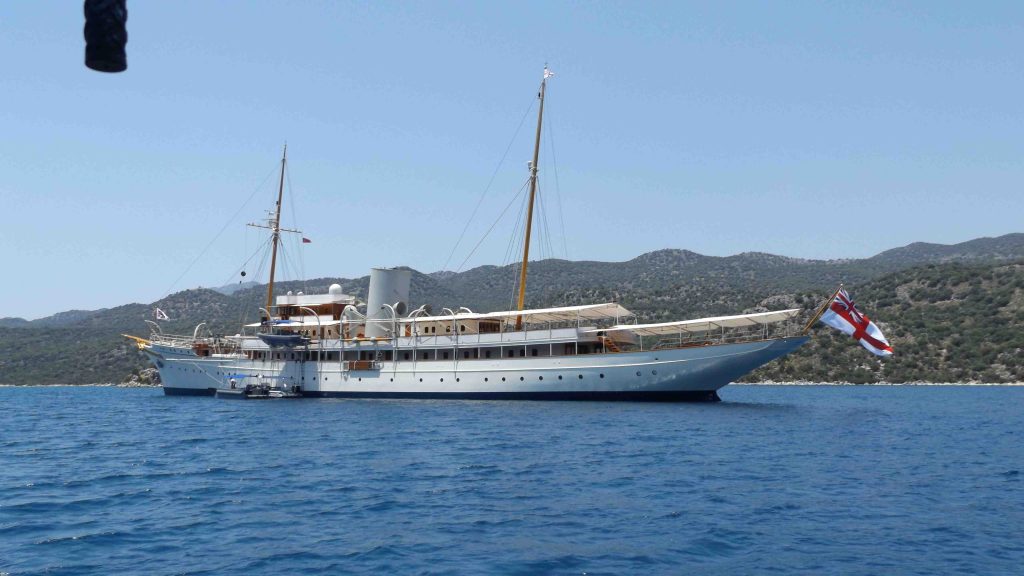
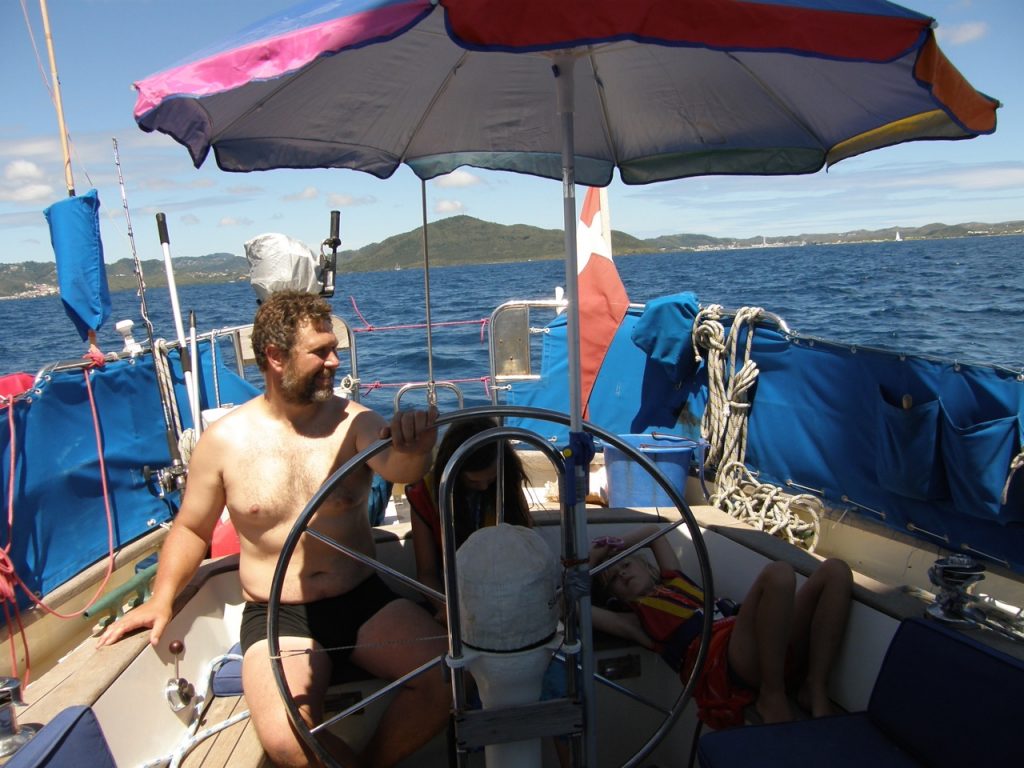
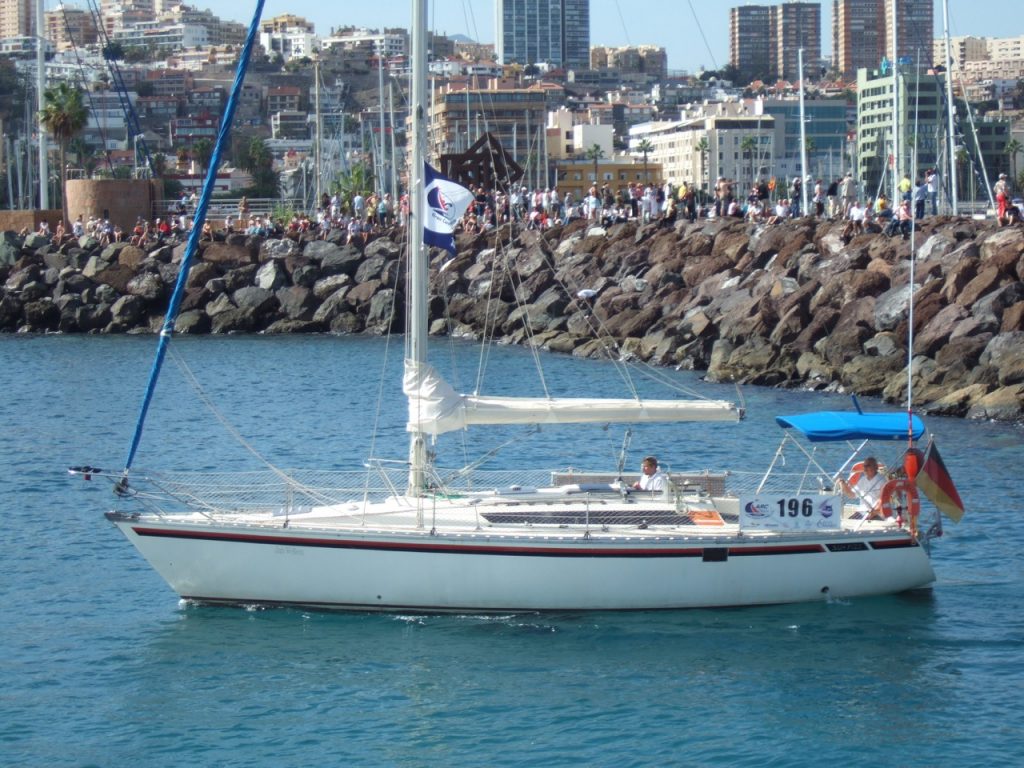
The number of compromises involved is such that many yachts only ever rig their bimini when at anchor. And time and again the most picturesque of yachts have their otherwise glorious lines defaced by unsympathetic sun protection.
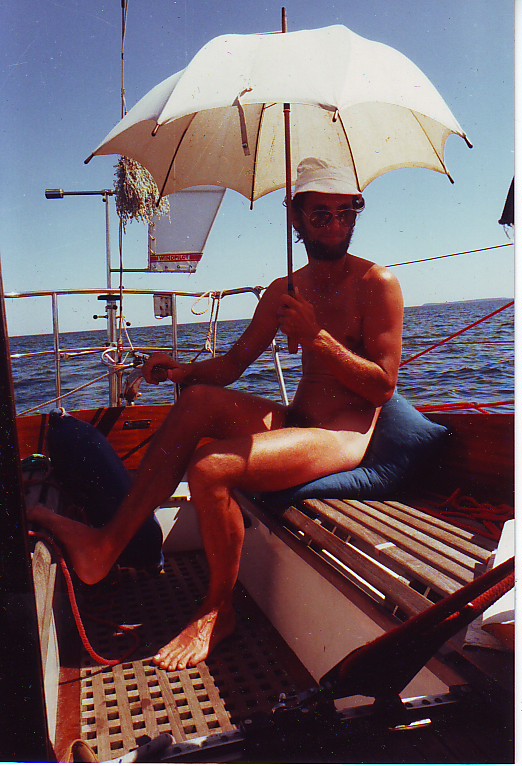
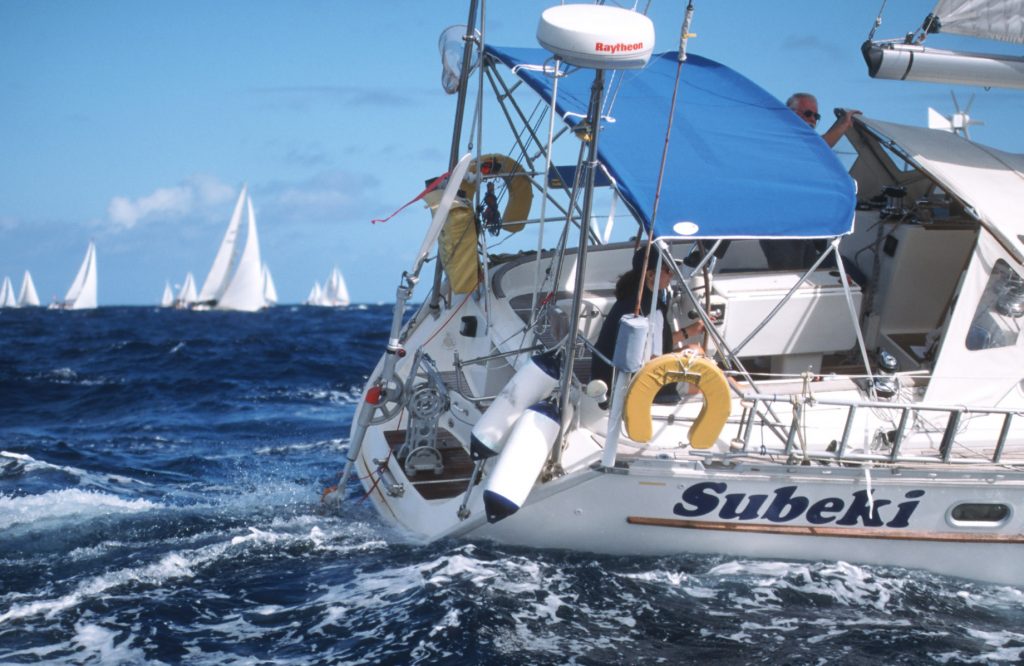
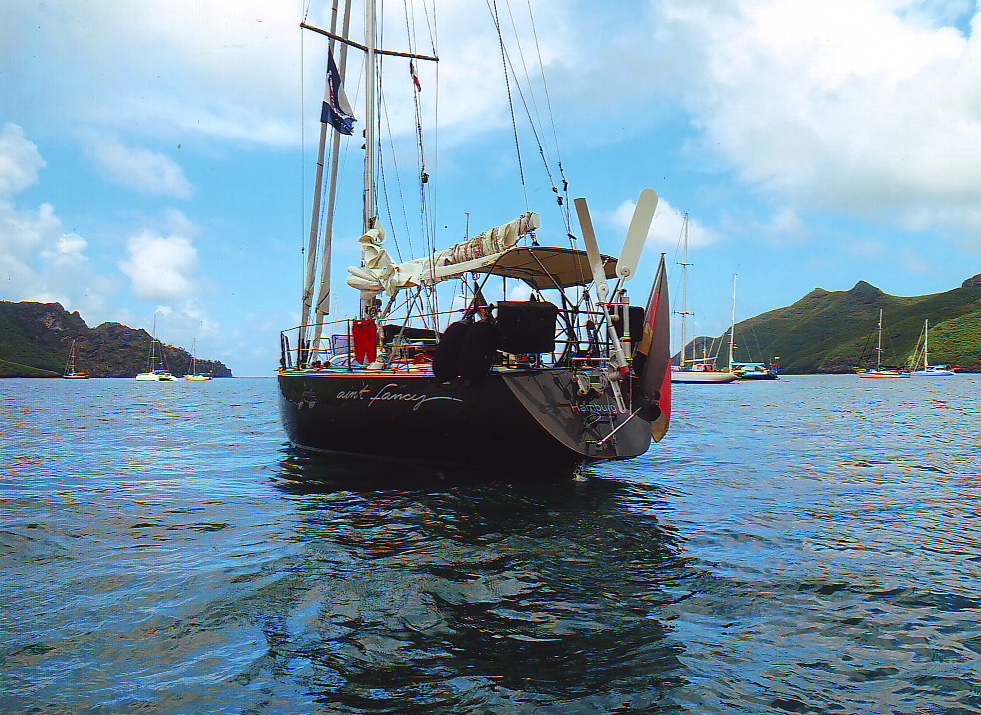
This post is intended to give an idea of the possibilities available and encourage yachtsmen and yachtswomen to raise their expectations. The solutions speak for themselves; indeed many have that intrinsic logicality that makes you wonder why on earth you never thought of them before.
ANTENNA ARCH – INSTRUMENT CARRIER
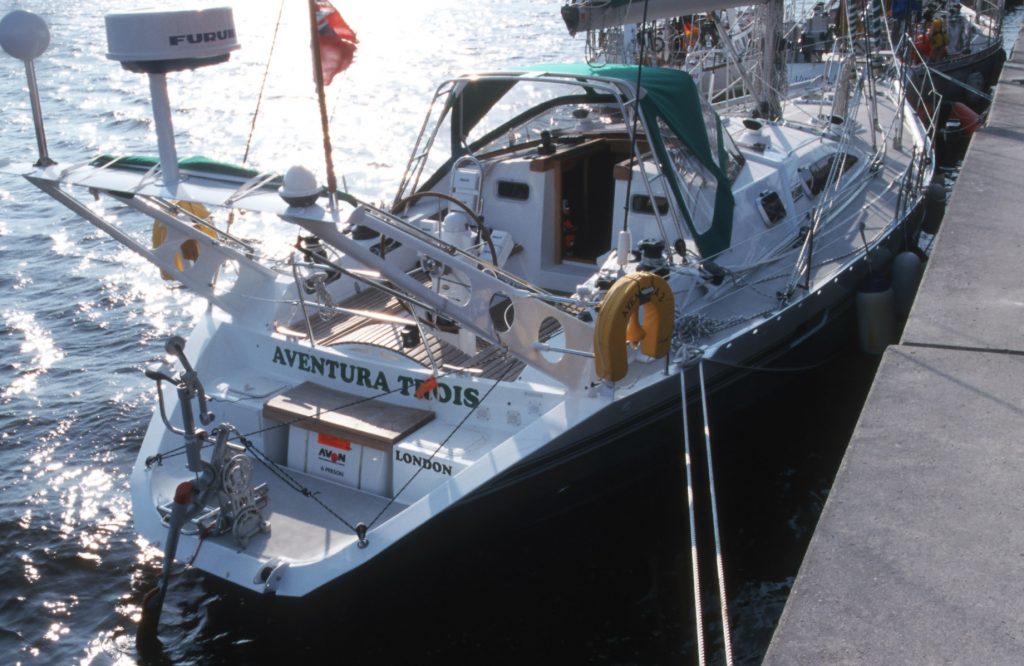
The magic ingredient needed to satisfy all of a sailor’s wishes effectively in one smart package and keep the stern looking good is an antenna arch. Invented in France, where it is known as a portique, the antenna arch (ignorantly ridiculed by some foolish types as a spoiler) was already established as a characteristic feature of Ovni yachts 20 years ago and quickly became a common sight among French bluewater sailors despite its unconventional appearance.
All new Allures, Boreal, Garcia and Ovni models come with one already in place. I consider the antenna arch an excellent invention: it makes installing important equipment very much simpler, has significant benefits in terms of safety and is now very smoothly integrated into the deck layout of French yachts.
ADVANTAGES
– The cables linking antennas to the corresponding device at the nav station are kept relatively short.
– Antennas will continue to function after a dismasting (unless the mast comes straight down over the stern, in which case the arch at least provides some protection for crew in the cockpit).
– The radome is high enough up to avoid irradiating the crew.
– The arch can also be used for other accessories.
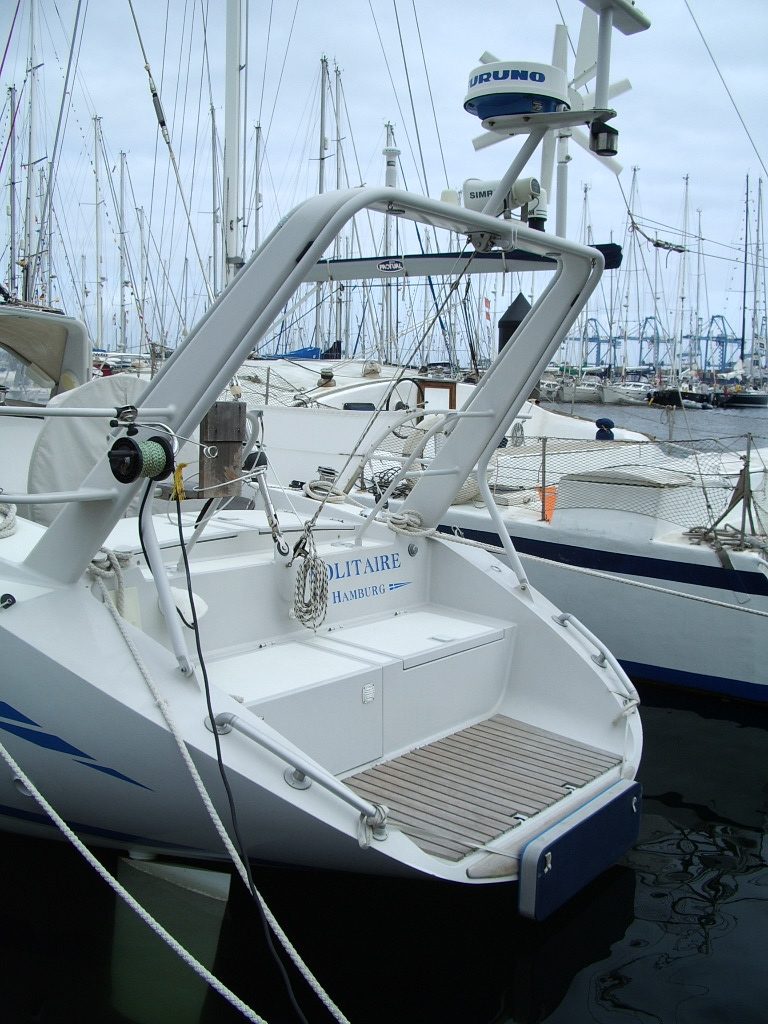
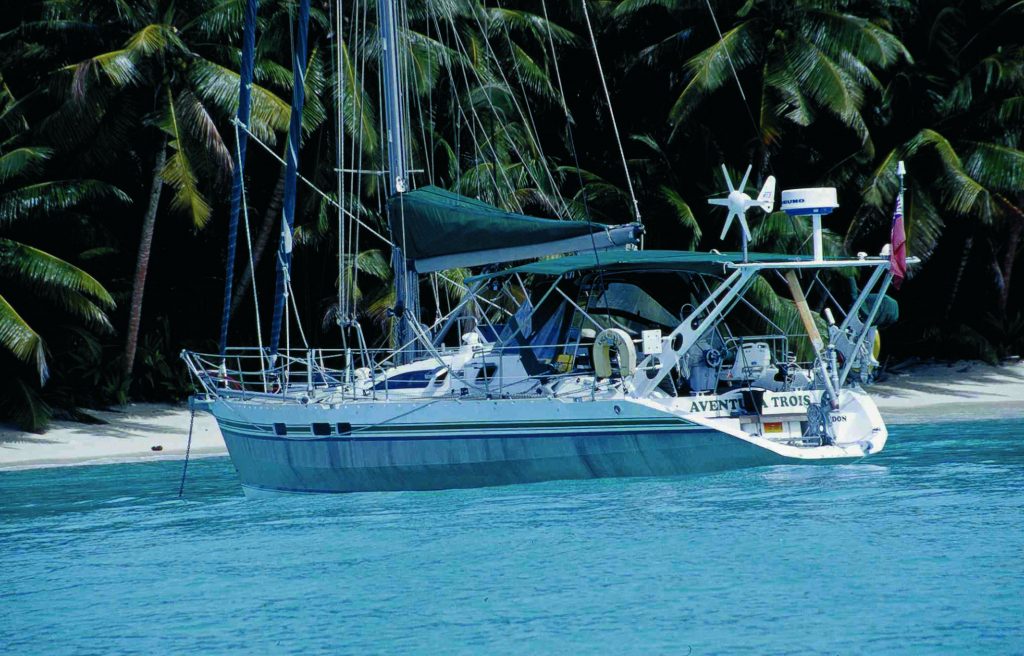
The logical next step in the evolution of the antenna arch was to integrate other accessories as well. Garcia, for example, made the integral davits mount standard on its designs a long time ago and I myself have been speaking for years about the advantages of a bimini that is made to match the arch and can be attached to the front of it in such a way that it folds away onto the arch like the cover on a baby buggy when not in use. Folded out in the manner of an umbrella, a sun shade of this type can withstand even quite strong winds (so can be used while sailing) but keeps the cockpit coaming and side decks completely free of stays and guys.
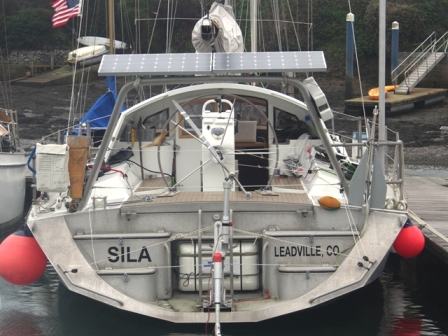
OLYMPUS DIGITAL CAMERA
NOTE: that the arches featured on the French aluminium yachts are always very robustly welded to the hull and it is not straightforward to replicate them on GRP boats because the deck or cockpit coaming laminate (sandwich) will not have been designed to handle such high loads.
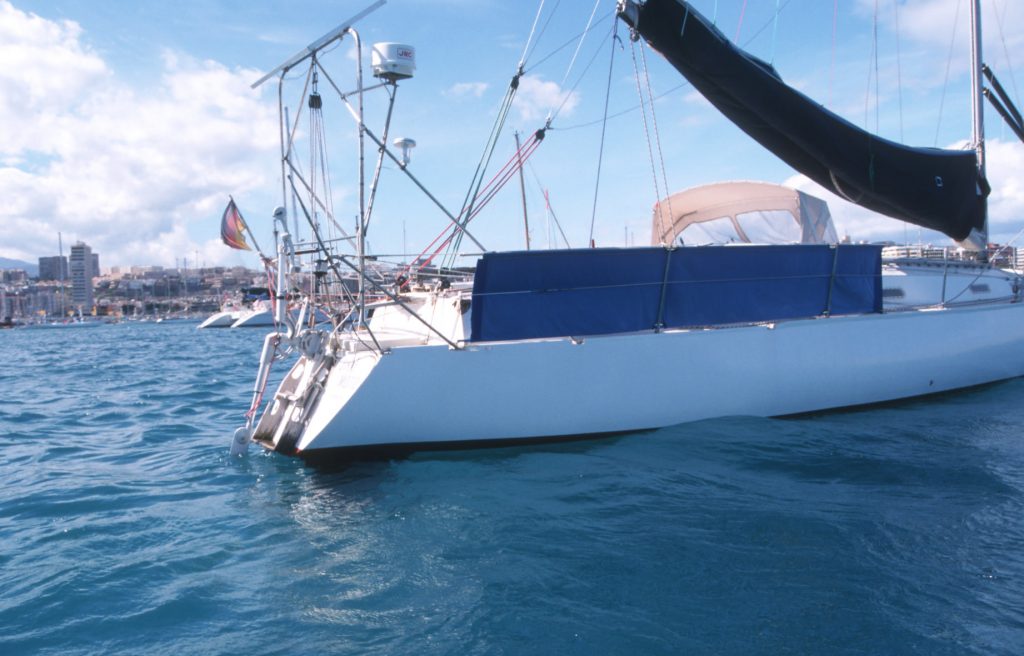
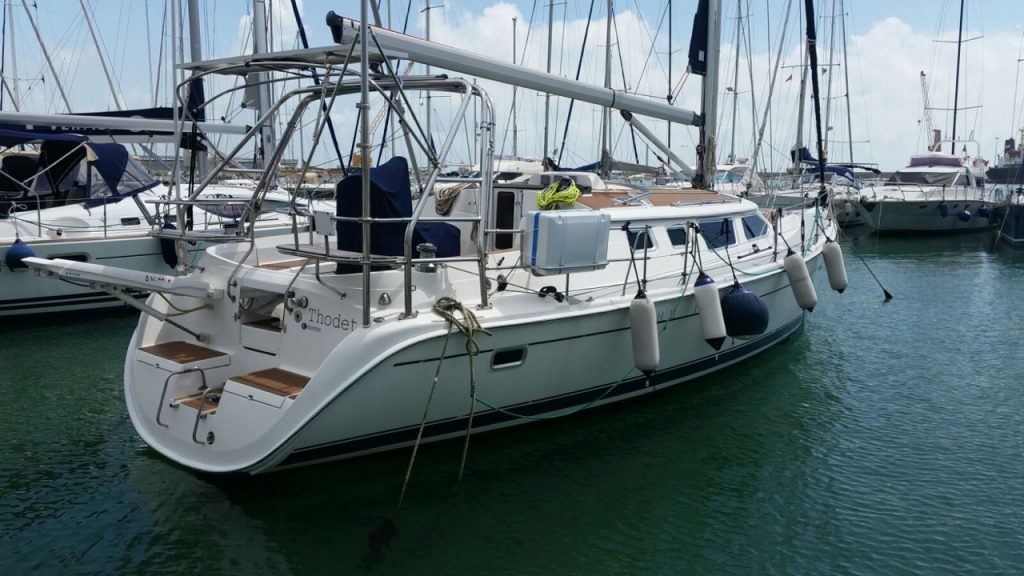
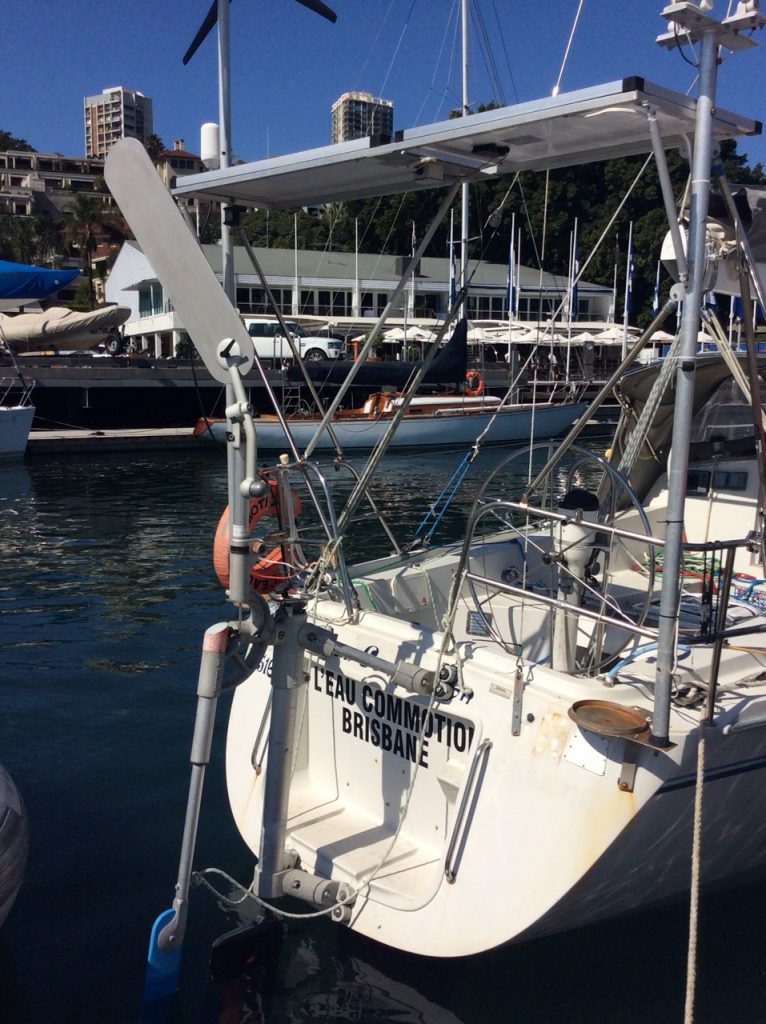
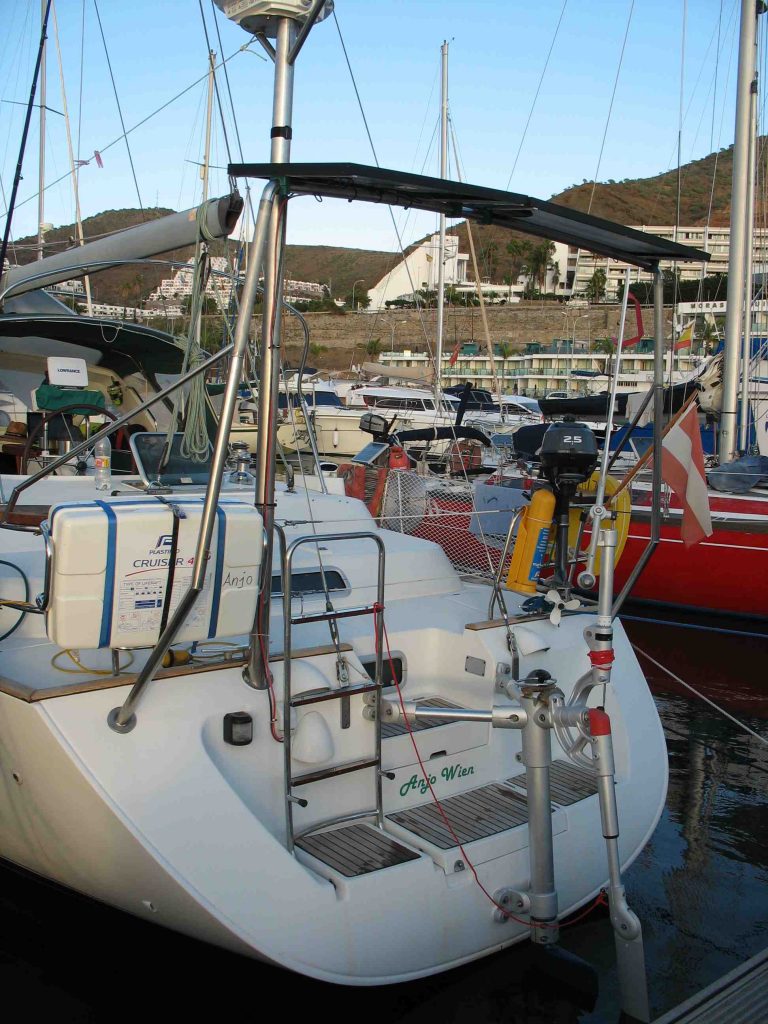
BE VERY WARY
Be very wary of any antenna arch that can be set vibrating by hand, as a structure this sensitive could let you down catastrophically once the combined inertia of the various devices it supports gets to work in an unsettled sea. We would do well to follow the standards established by the French designers and yards here, provided that the boat concerned has sufficient strength in the relevant areas to support the arch proposed. Anything on this scale that begins to flex or vibrate at sea is likely to topple eventually – with implications for equipment and crew alike.
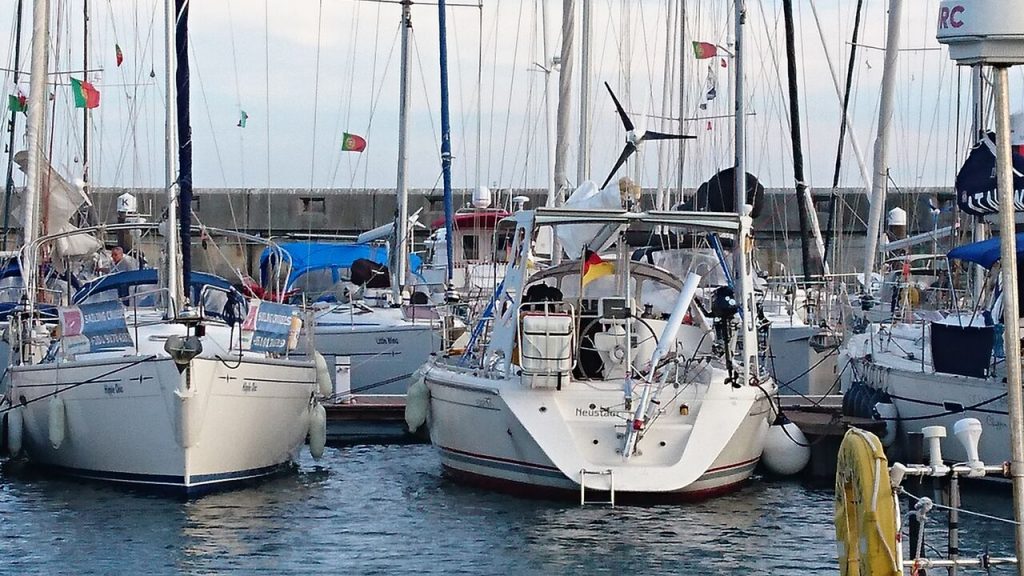
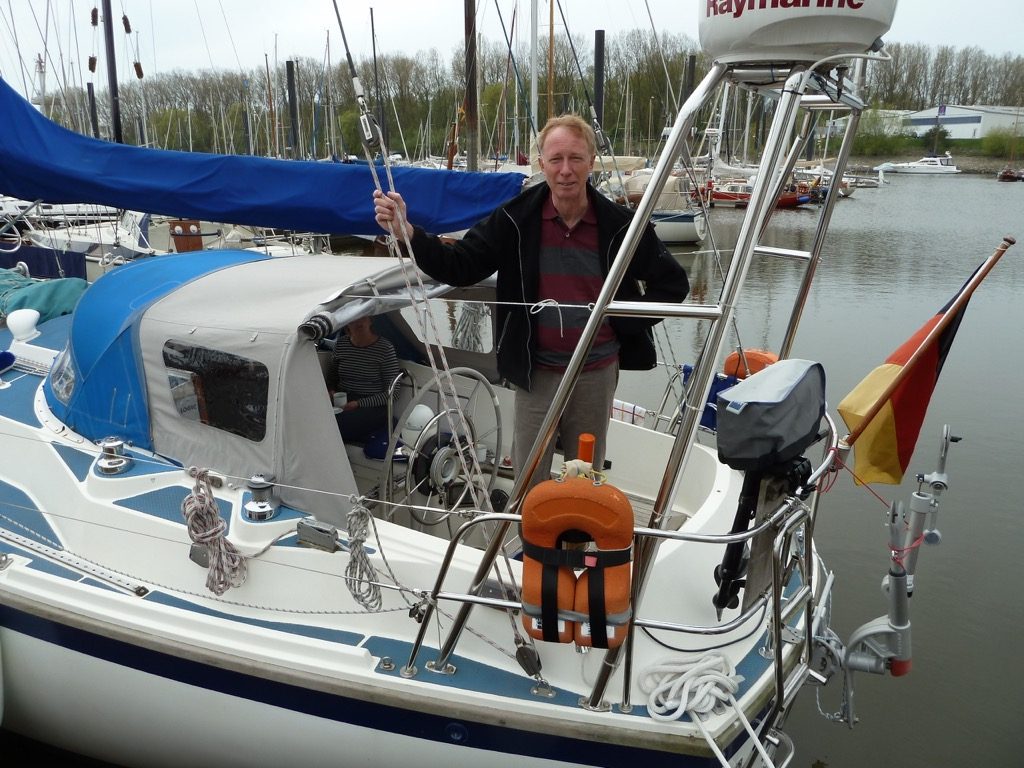
Antenna arches on GRP boats require effective load distribution and additional reinforcement (of the structure itself as well as its mountings) to prevent the forces brought to bear on the deck causing permanent damage. The antenna arch on particularly wide or large boats can advantageously be sited 30 to 40 centimetres in from the toe rail, possibly as an unobtrusive extension of the cockpit coaming, to leave space for easy line handling during manoeuvres and a handy high-side perch with an excellent view to weather.
LIFE RAFT
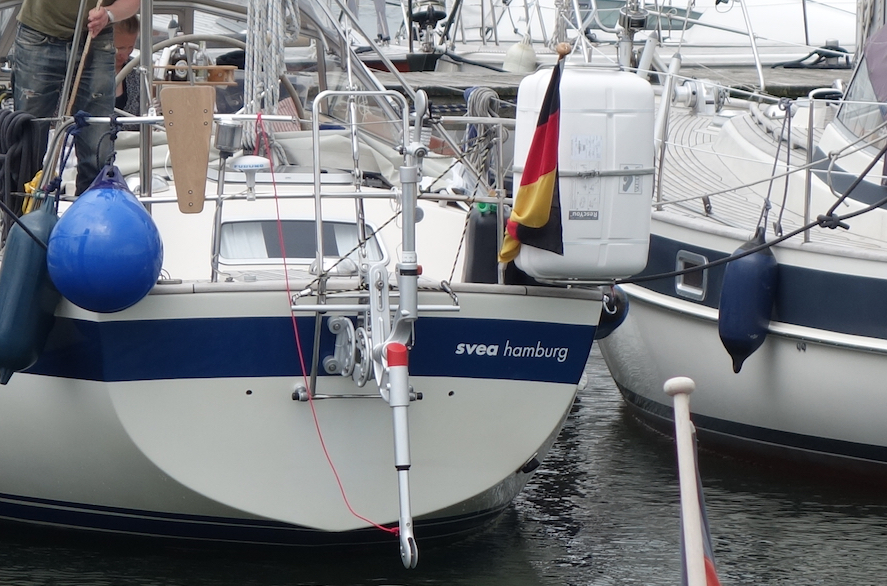
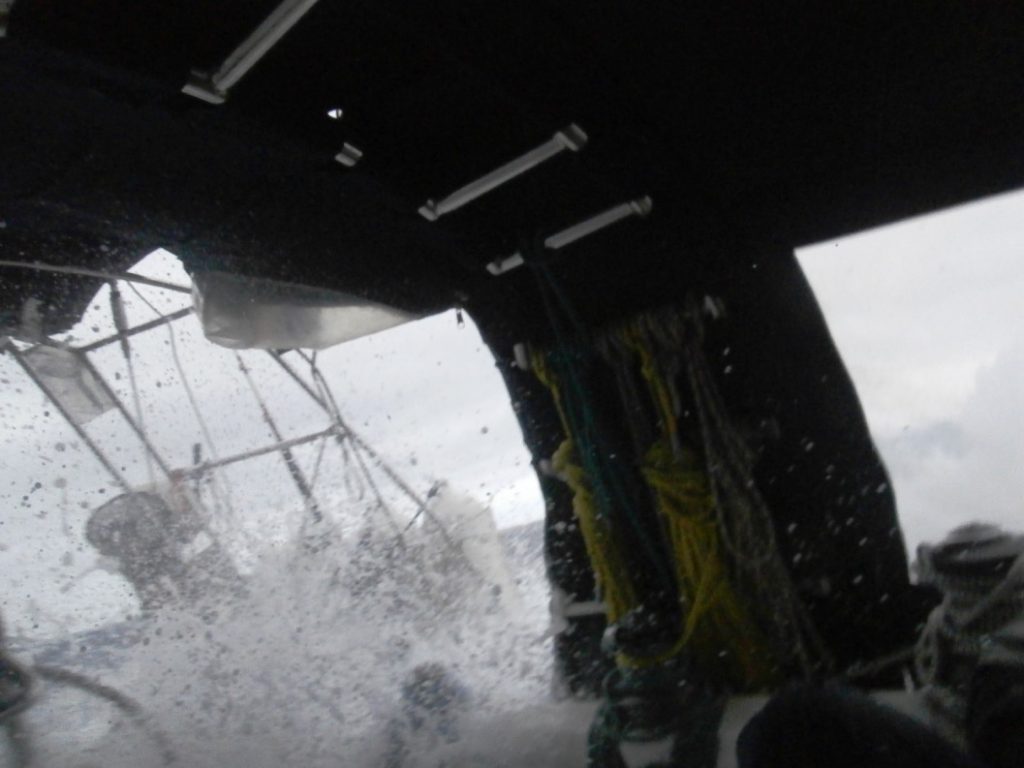
Most aspects of the life raft debate have been done to death, but it strikes me we hardly ever hear anything about where best to store the life raft on deck. A large proportion of the life rafts I see have not been installed at all wisely, usually because the installer has given too much weight to the supposed importance of being able to get the raft into the sea easily in an emergency.
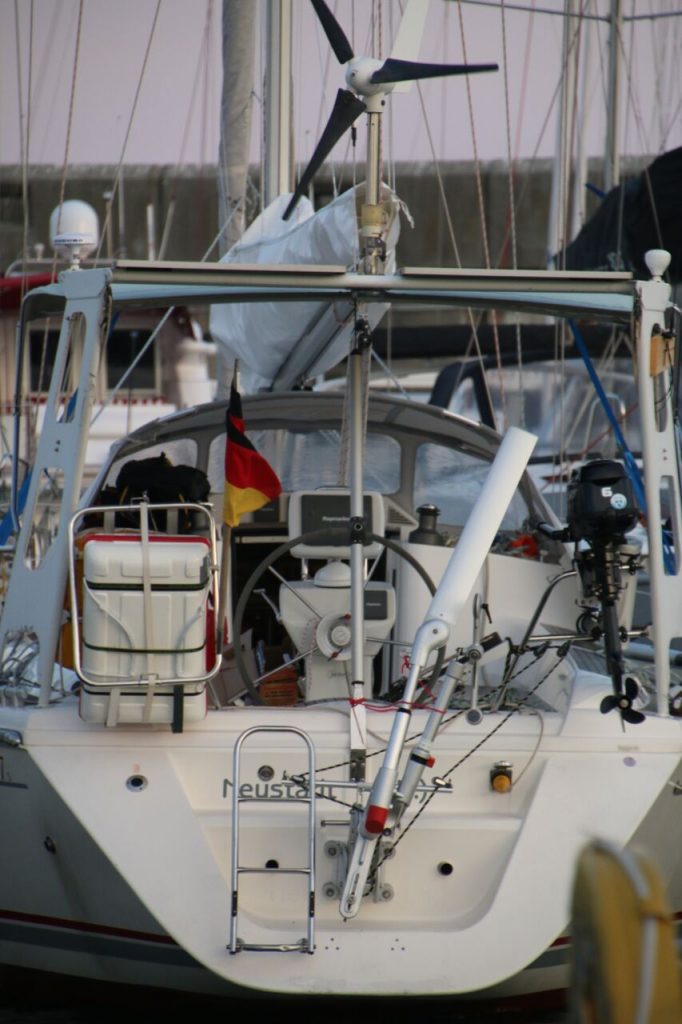
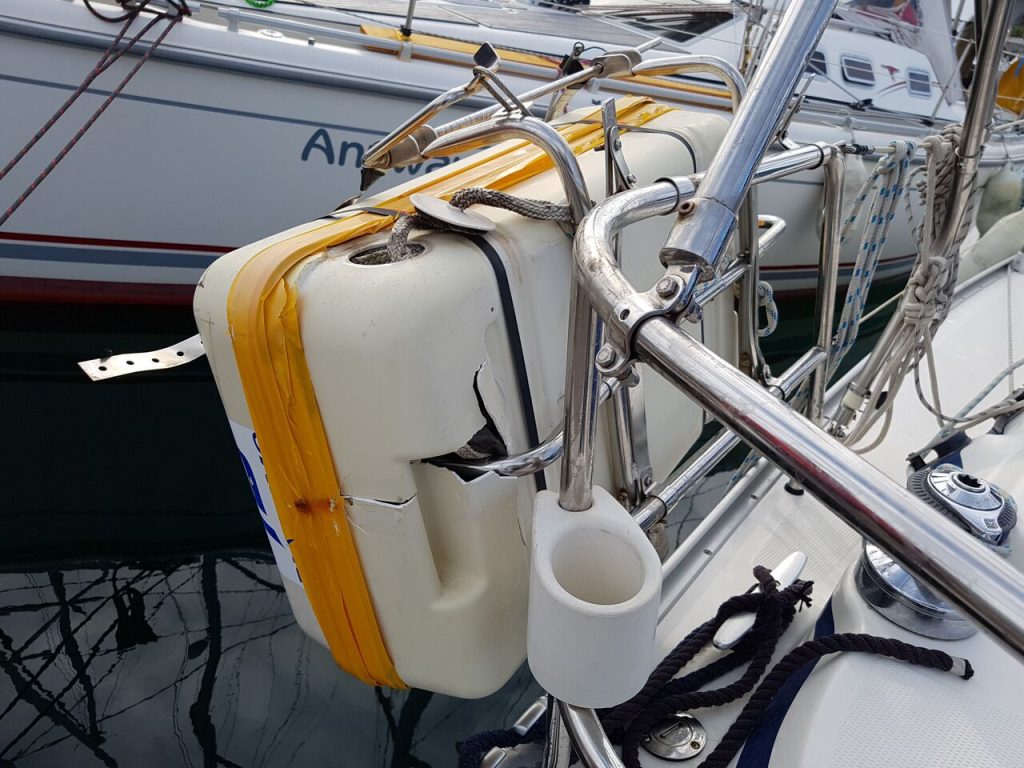
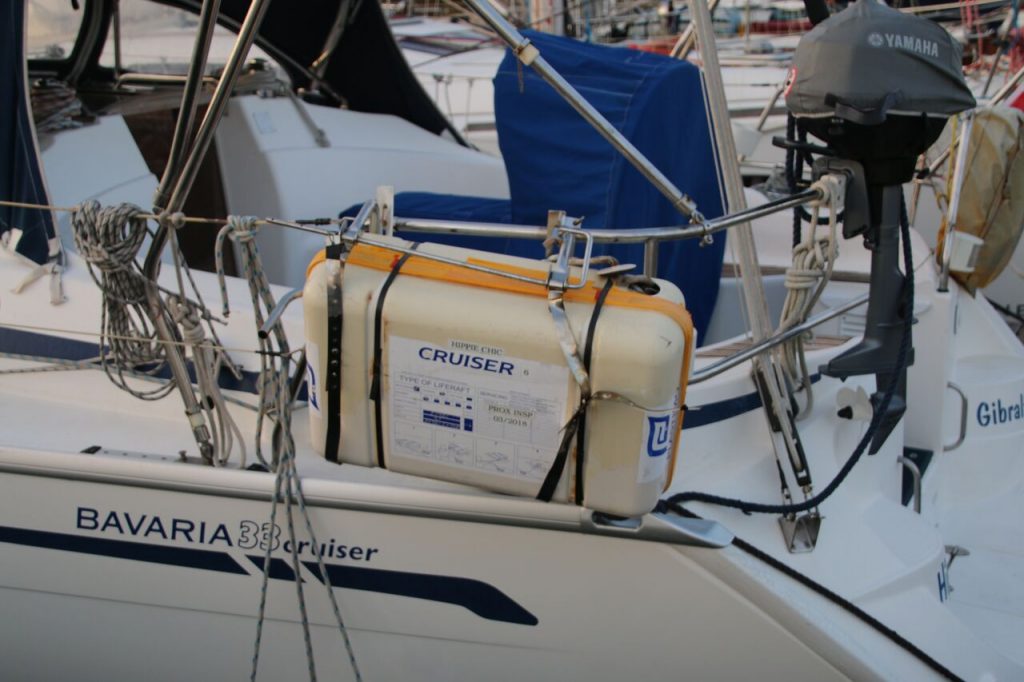
Mounting a life raft and cradle on the stern rail might seem an attractive option, but stern rails today are seldom all that firmly seated and the impact of a substantial wave could well overwhelm the self-tapping screws or undersized bolts not infrequently used on modern builds and wash the whole lot overboard, cradle and all. The consequences were the impact to include a crew member caught off balance by the wave as well as the wave itself hardly bear thinking about (which is it say they bear thinking about in considerable depth but only from the safety of the sofa well in advance of venturing anywhere far from the coast). The whole idea that the life raft needs to be poised right by the rear exit for easy launching is misconceived: in reality a life raft located anywhere on deck will find its way into the seething brine tout de suite when the time comes.
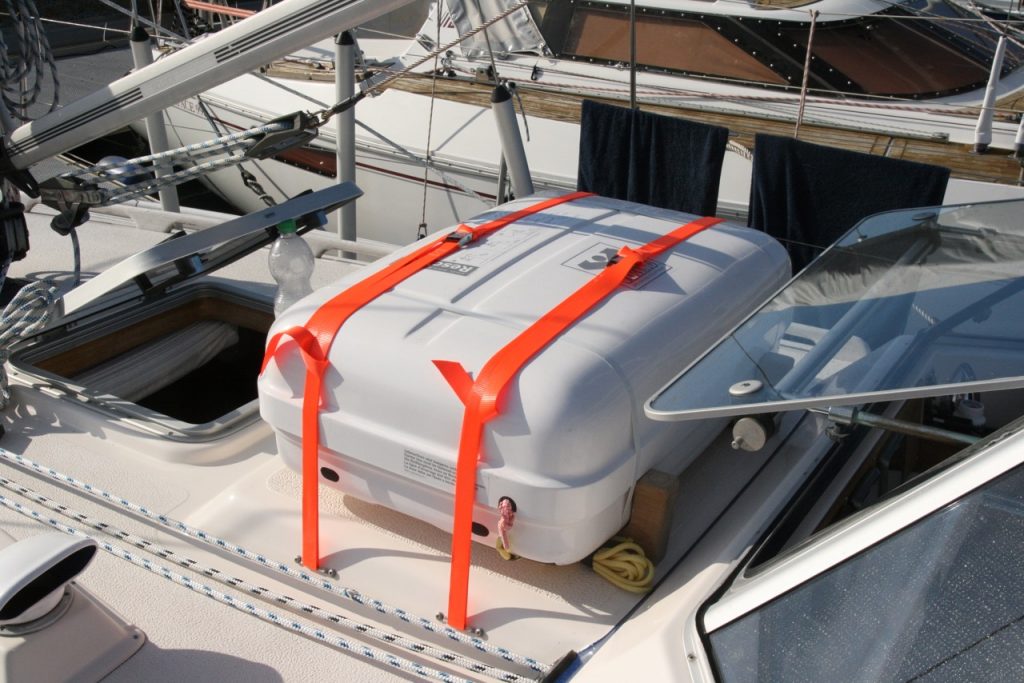
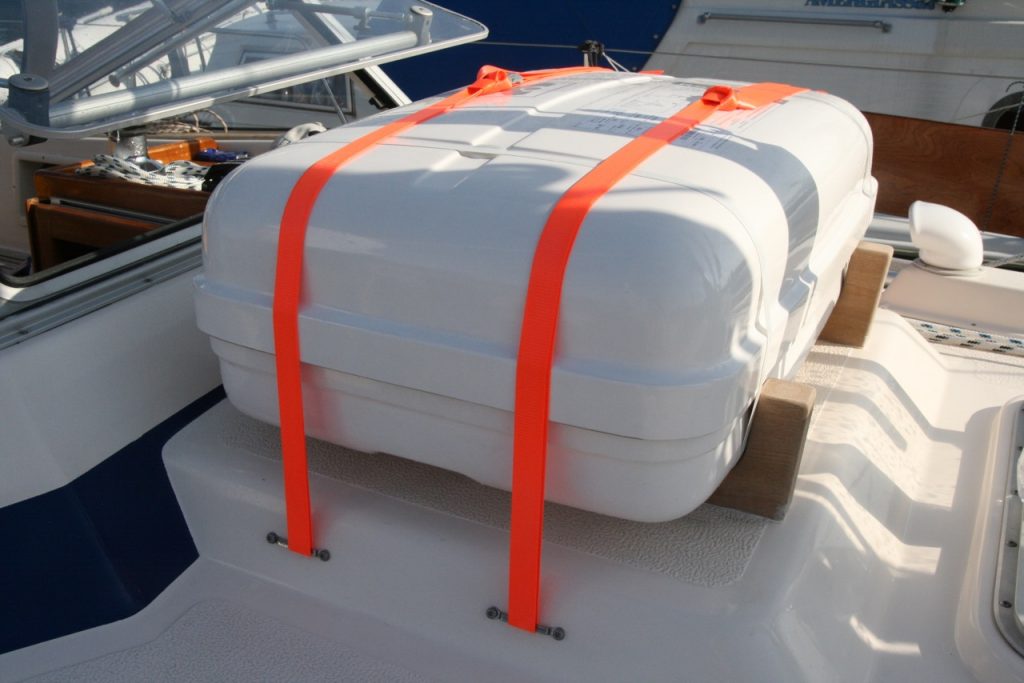
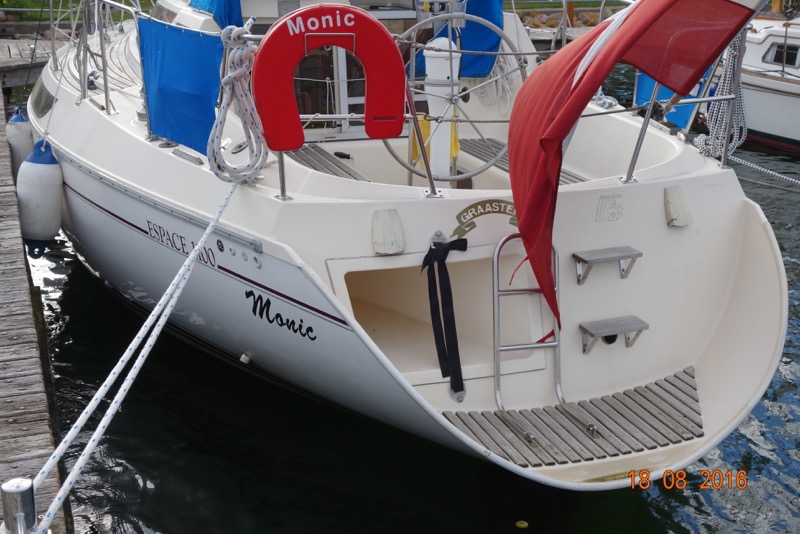
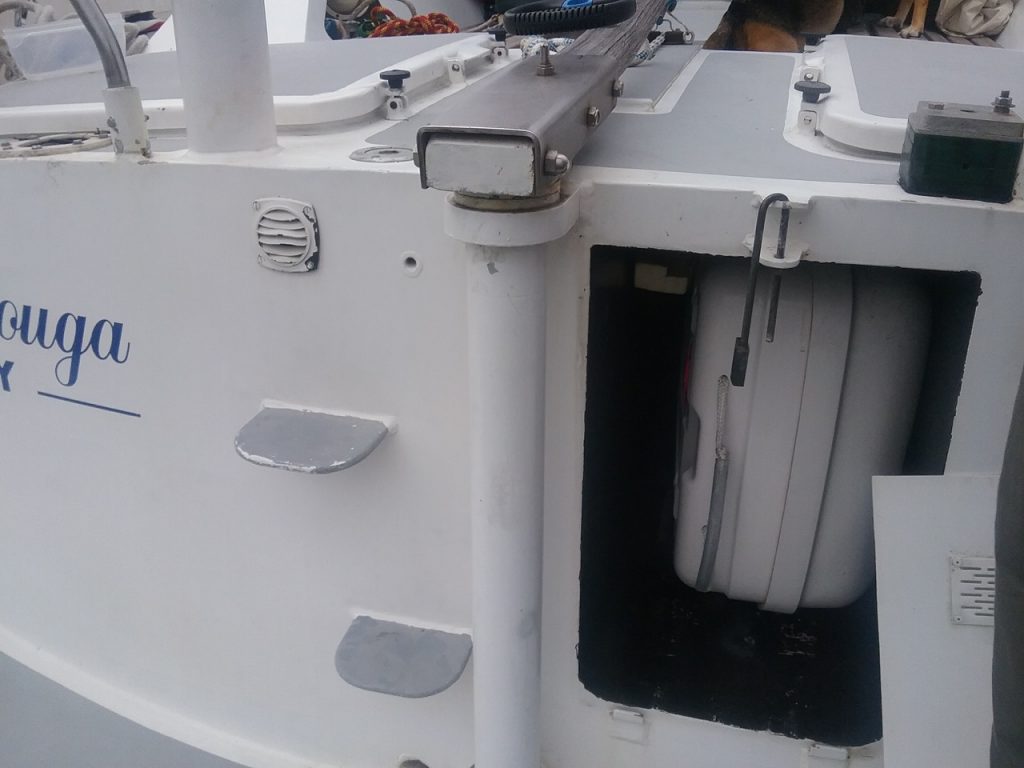
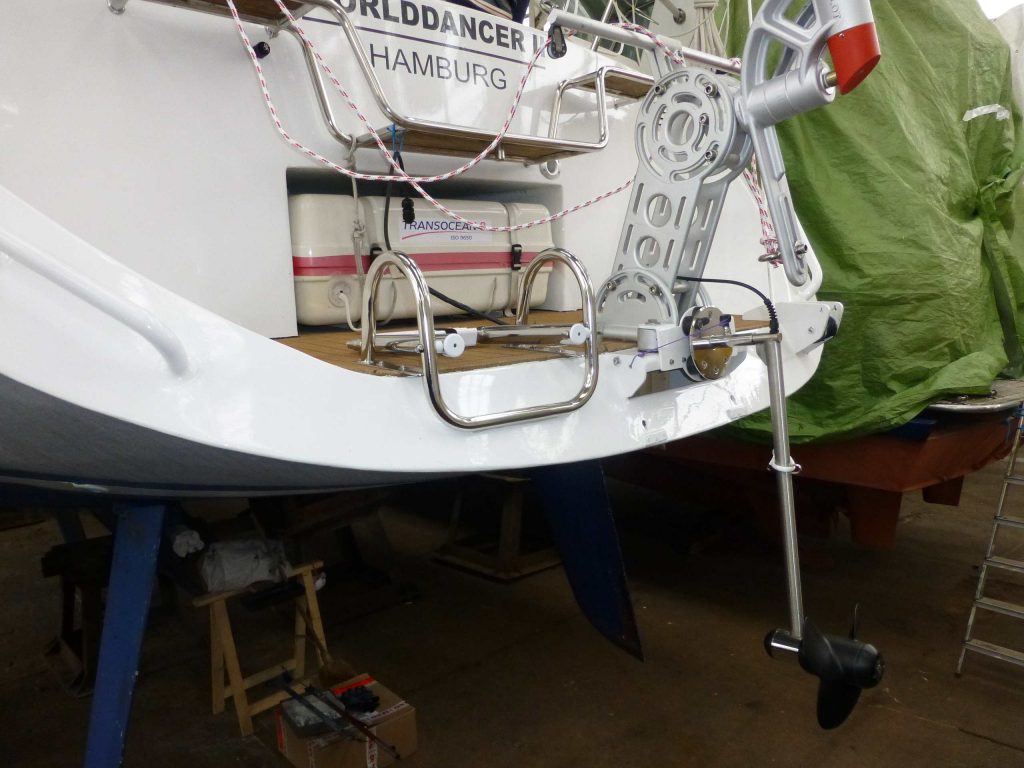
It is also worth bearing in mind that a container stored vertically will never be properly watertight, which is why manufacturers include instructions about making sure the drain holes in the base are opened and kept clear. A raft stored in a permanently damp environment will surely not last as long as one that is reliably kept dry. Whether the need for more frequent replacement is a price worth paying (and whether the manufacturers might have a vested interest in your answer) we must each decide for ourselves.
Life rafts need looking after and they need servicing – and the companies that service them understandably operate under very strict instructions from their insurers, so if there is any doubt at all about the condition of a life raft, the inspectors will not hesitate to condemn it. Everyone who goes to sea has a strong personal interest in keeping the life raft happy and if that means engaging brain and creating a better solution – a solution that also helps to save money in the long run – why not?
I like to see life rafts stored flat on deck, preferably under a tarpaulin to protect against spray and UV. French boats often treat the life raft to its own private compartment in the form of a standard recess built into the bathing platform
HYDRO GENERATOR
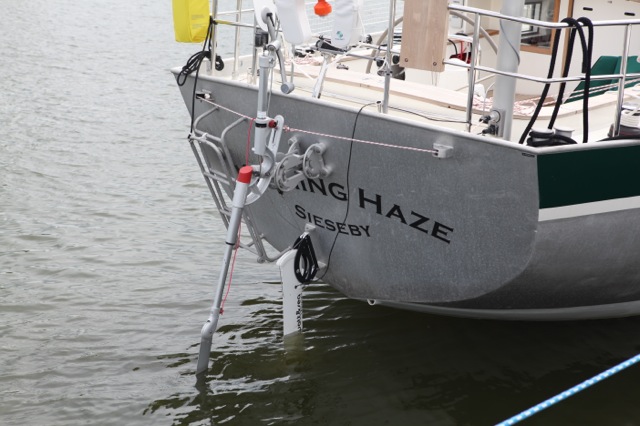
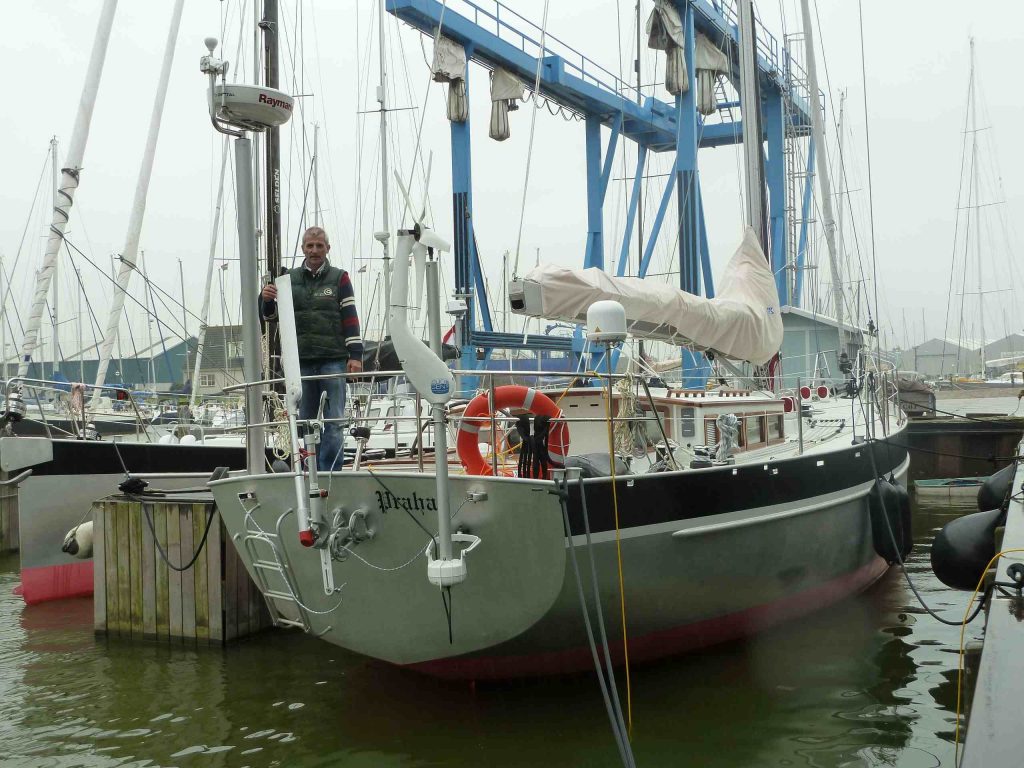
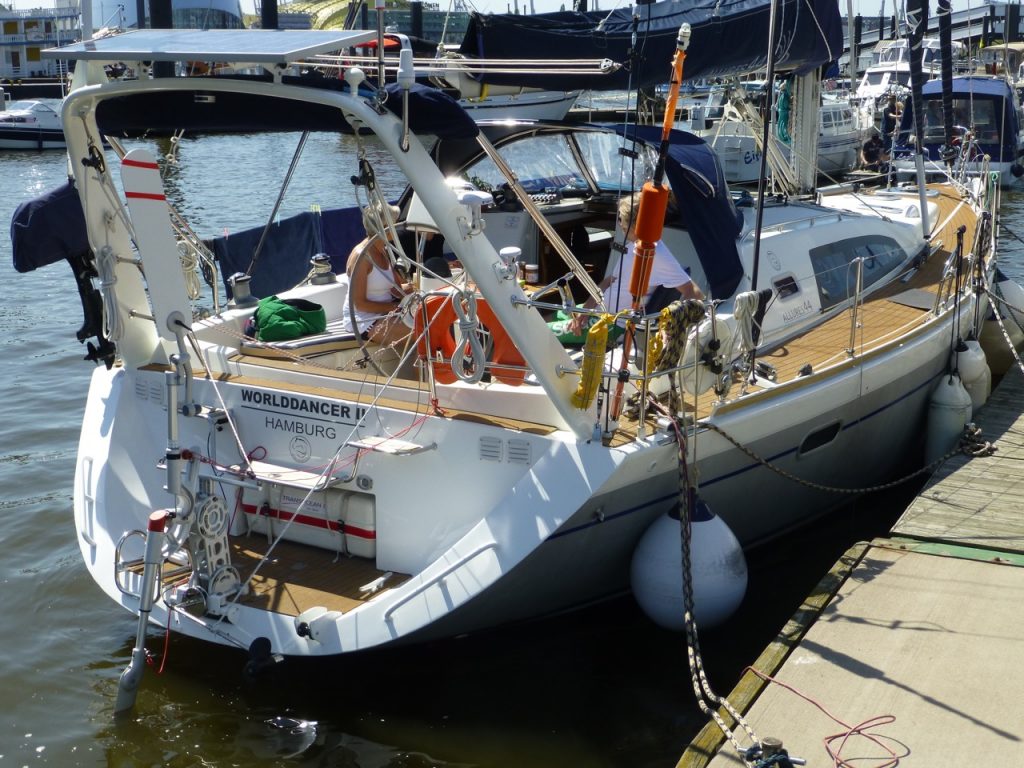
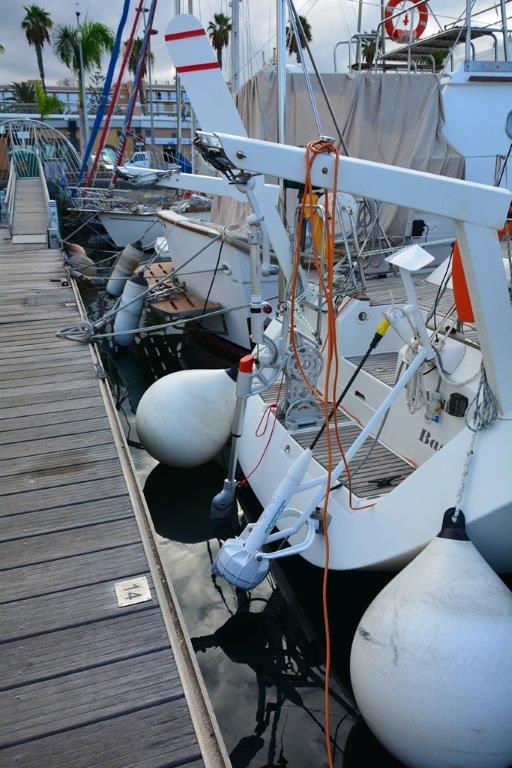
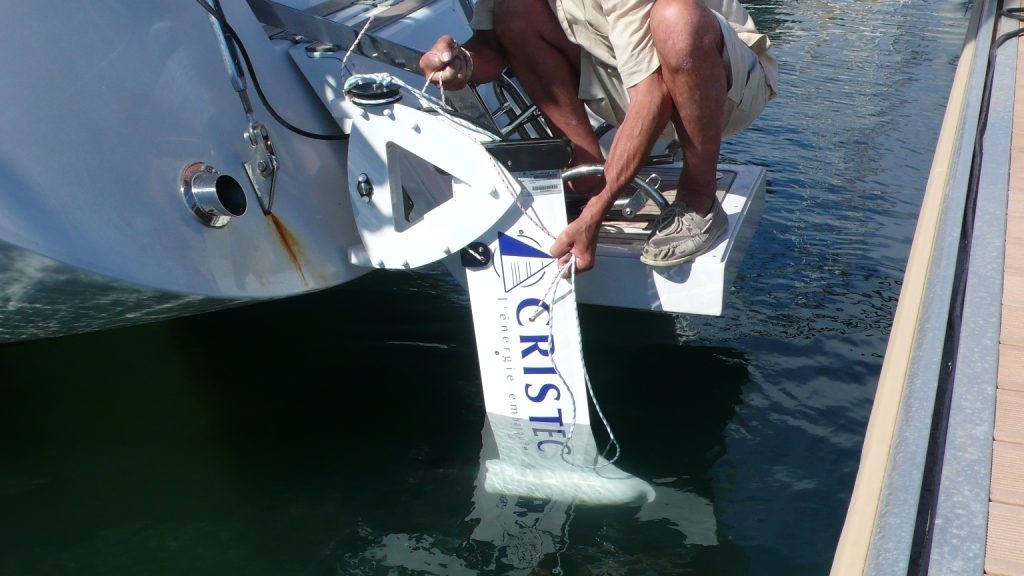
Hydro generators have traditionally received far less attention than wind generators, but their profile has recently begun to rise due, in the main, to their use on power-hungry fast racing boats and while it may be driven by speed and competition, the market that has developed as a result also has much to offer the more pleasure-oriented bluewater sailor. Hydro generators have now become effective enough to render some wind generators functionally obsolete – and this relatively high generating capacity, do not forget, comes from a unit that makes no noise to speak of and represents no danger to the crew (so no more worries about body parts or turbine blades in places they aren’t supposed to go).
THE FULL HOUSE
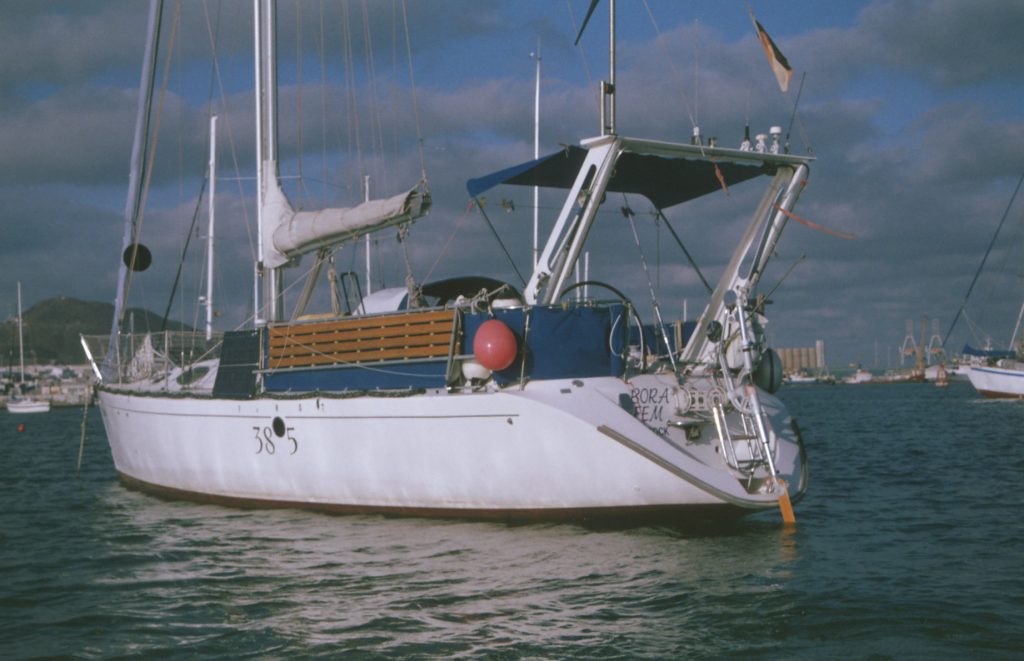
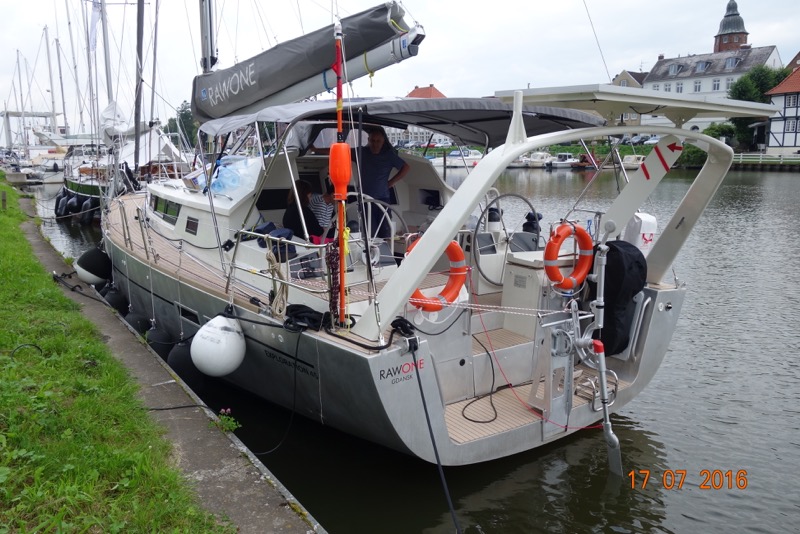
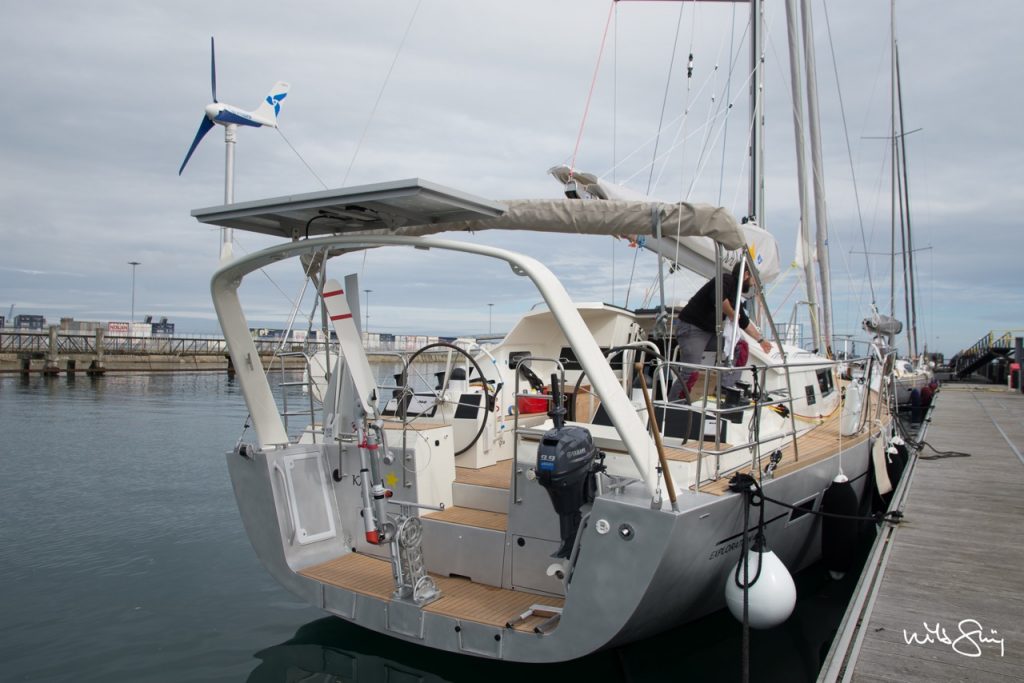
The ideal antenna arch has davits in the form of a moveable frame provided on its aft edge and a bimini mounted on its forward edge as well as all the necessary antennas, the radar, a wind generator and movable solar panels positioned to make the most of the sun lined up on the top like so many swallows on a wire. This arrangement keeps heavy cables out of the mast and significantly reduces weight aloft for better handling and performance under sail. It’s safer too (see above): losing the mast doesn’t mean losing communications. Fewer cables in the mast means fewer cable plugs at the mast step too and fewer cable plugs means fewer of that bane of the sailor’s life, dodgy connections. What could be better?
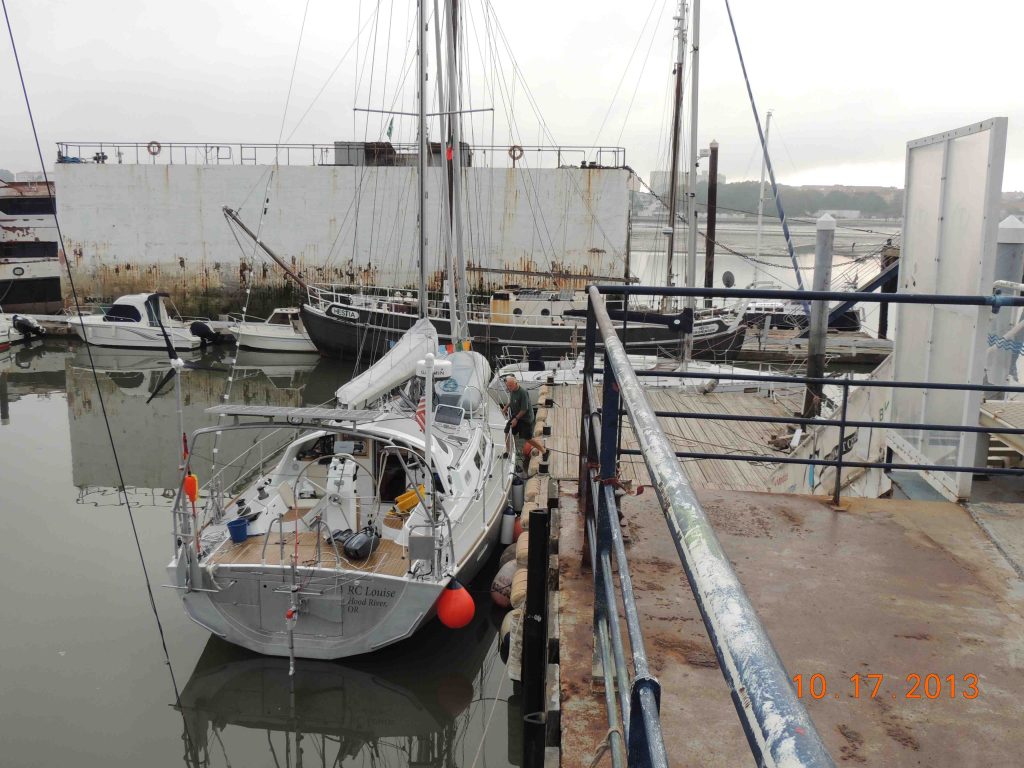
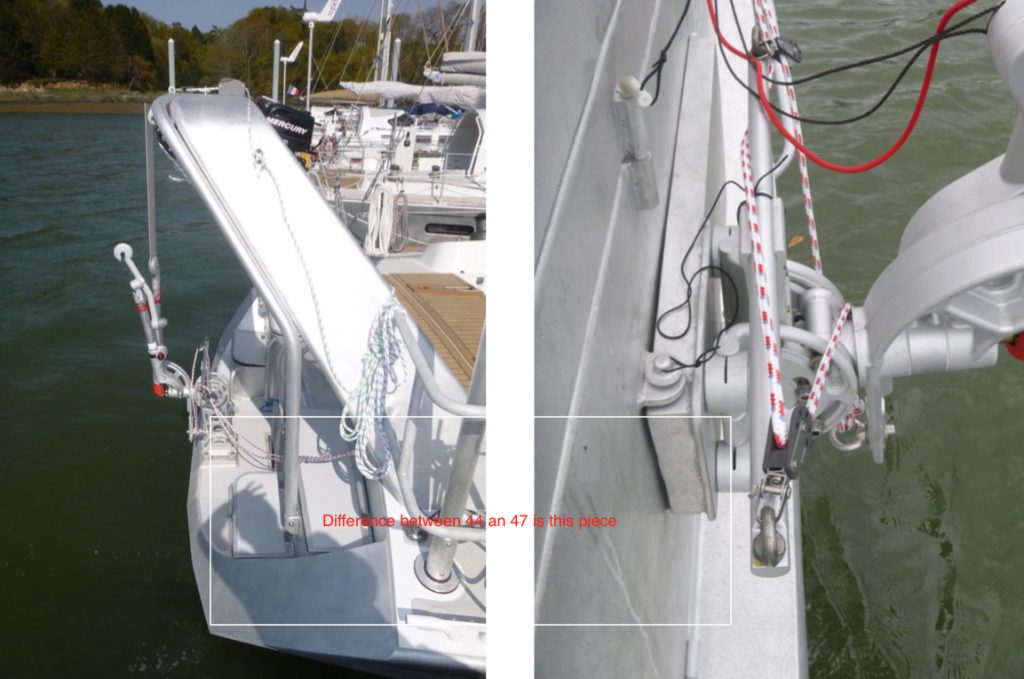
A boat graced by an antenna arch and a bathing platform that
– includes an integral nest for the life raft,
– leaves the centre of the transom clear for the all-important vane gear,
– also incorporates a swim ladder
– and can accommodate a hydro generator as well
will stand out as a paradigm of balance and function in port or at anchor and allow other sailors to see for themselves which errors they might have avoided and what the ideal bluewater yacht looks like today.
My first foray into this subject elicited the following response from Sybille and Christian Uehr, owners of the yacht SUBEKI, which I include as a further real world example:
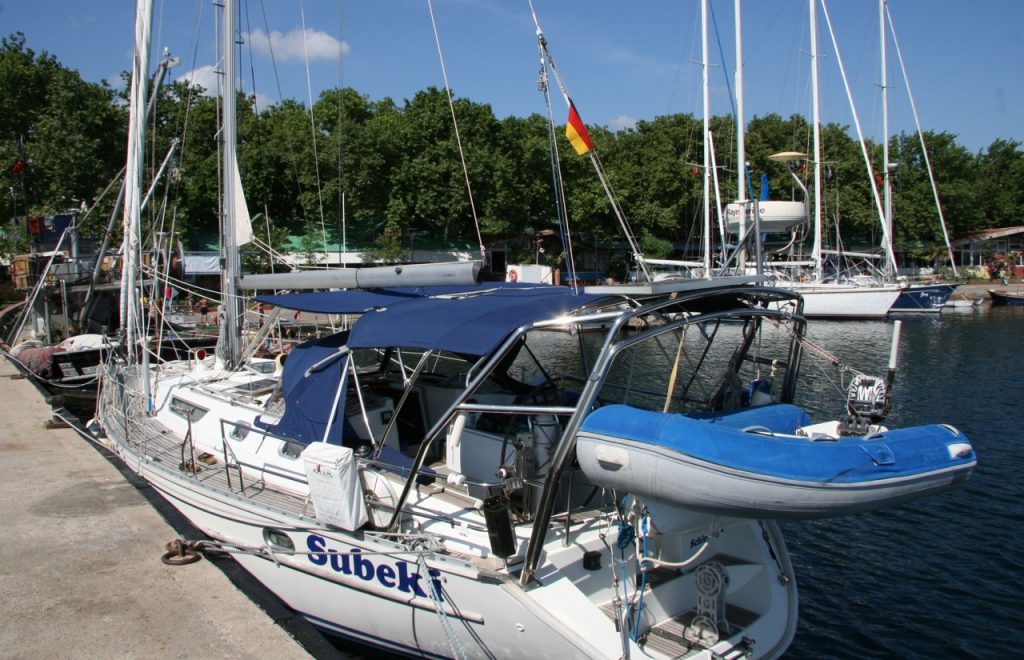
“Hi Peter, I very much enjoyed your transom ornaments article. I attach a photo of the Subeki solution, which has done us proud ever since we left Australia in 2004.
Our frame carries a radar antenna, wind generator, short-wave whip antenna, antenna coupler, WLAN antenna and a big solar panel as well as our fully equipped Caribe C9 dinghy (with 15 HP Yamaha, 23 litre fuel tank and anchor), which I can raise/lower with a single block and tackle system in two minutes using a winch. We think it looks fine too.
For safety reasons we still strip the dinghy and store it on the foredeck for offshore passages just as we always have done. This keeps it out of the way of our Pacific vane gear too.
Keep it up!
Regards,
Christian
Subeki
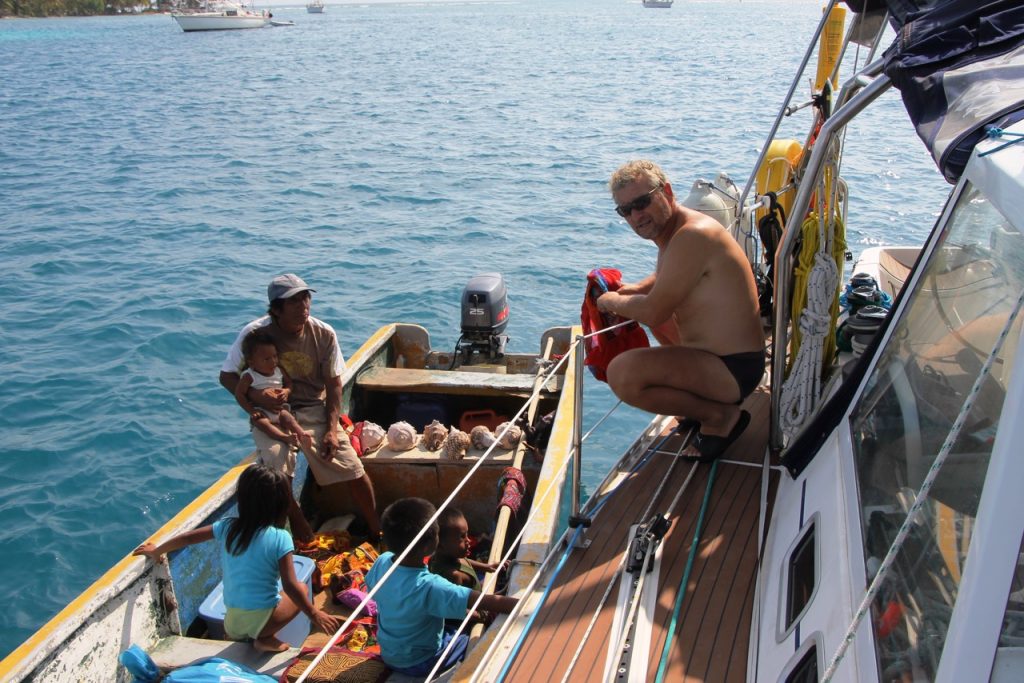
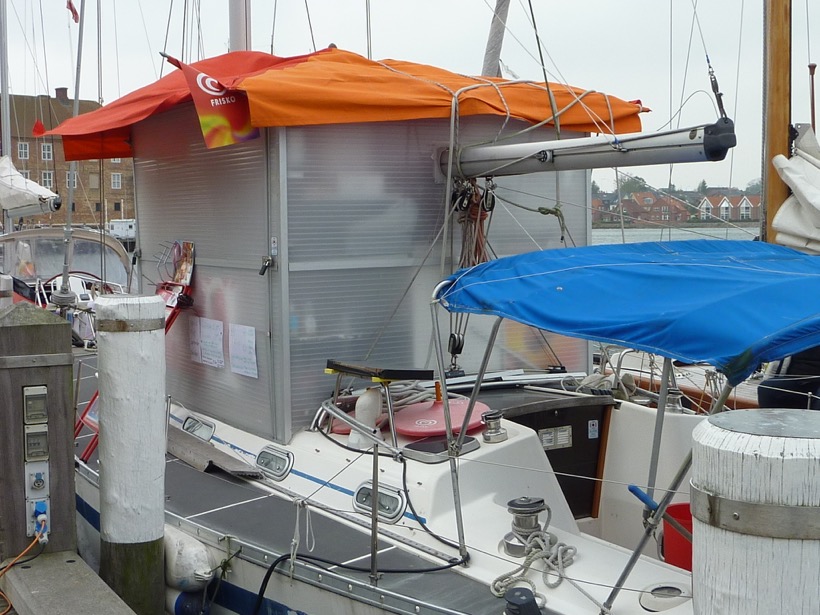

I mentioned at the beginning of this post that low expectations and a general lack of awareness about what can be achieved may well go a long way to explaining the prevalence of poorly conceived and executed arrangements at the blunt end. Reading about it all is one thing, but seeing photos of what other people have managed to do and of the smart (in every sense) solutions they have devised should inspire all of us to aim higher and comprise less when it comes ornamenting the inhabited end of the boat.
At least I’d like to think so, concludes
Peter Foerthmann
































